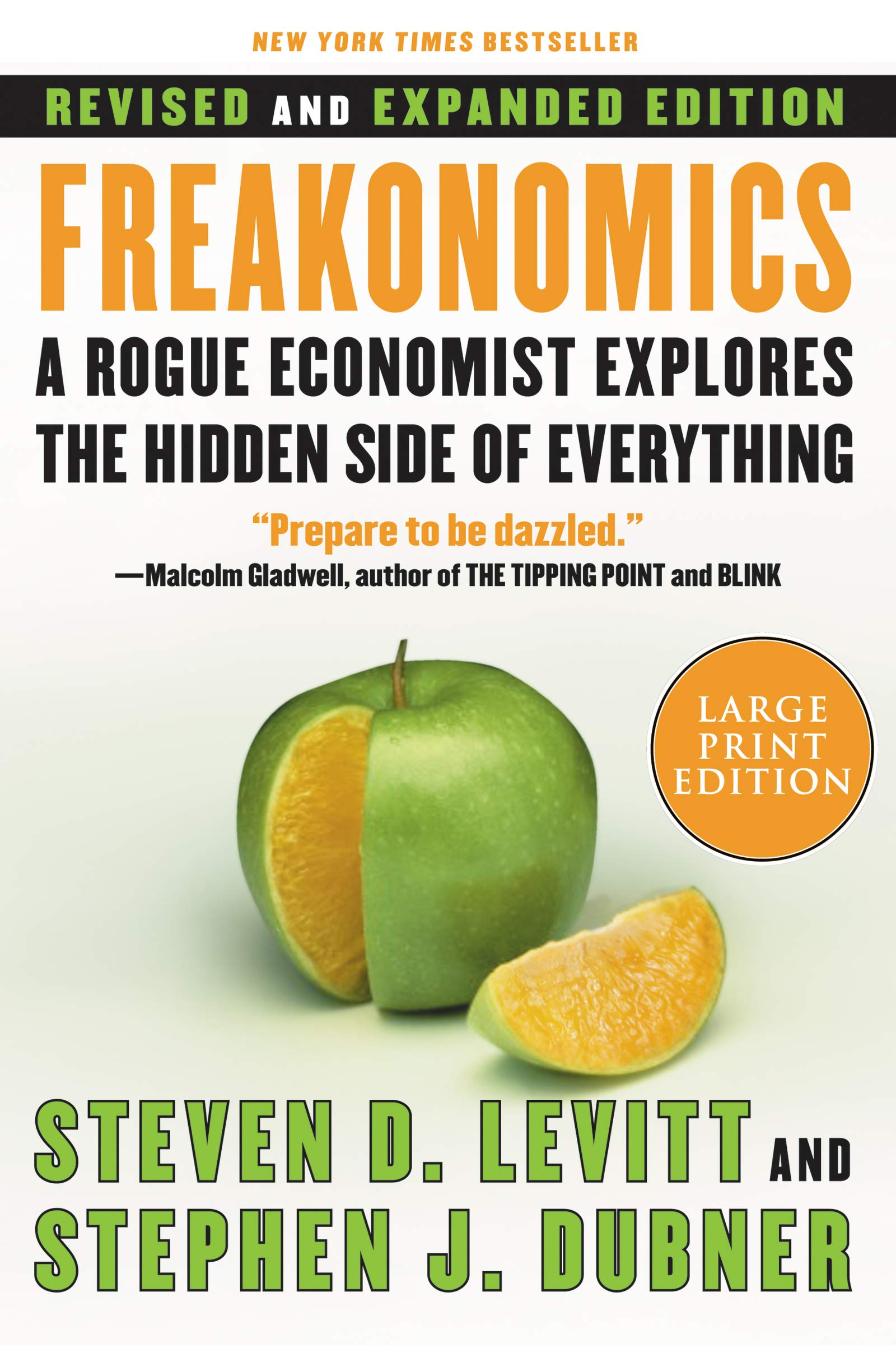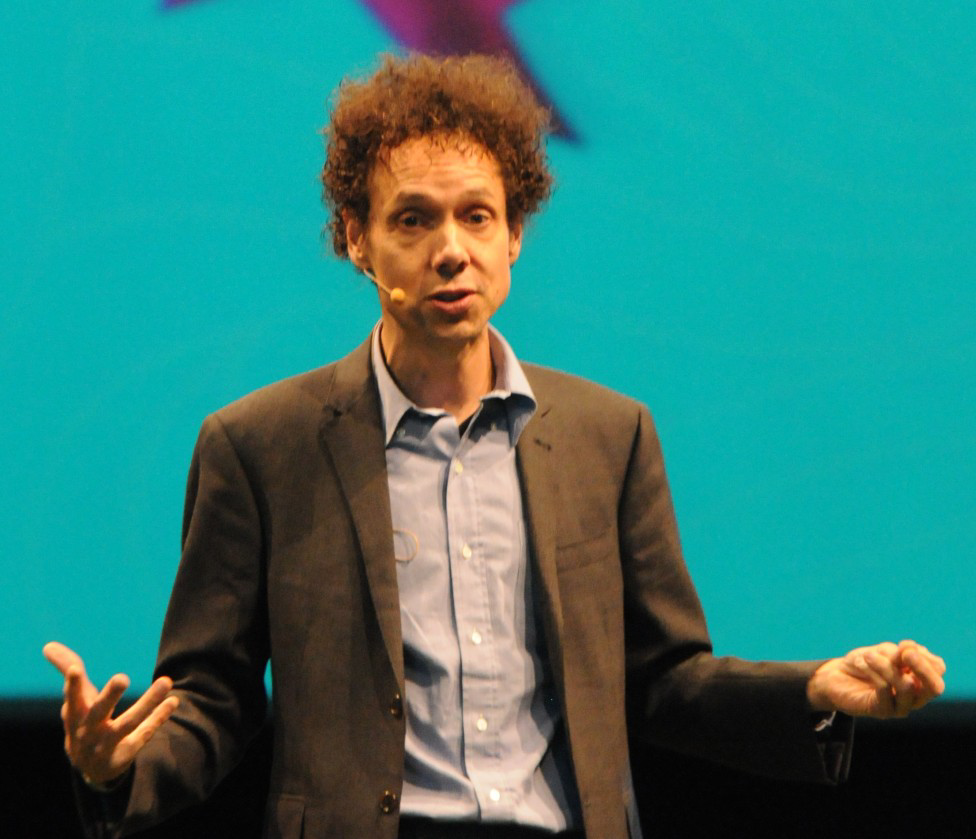Tell me a story
Malcolm Gladwell is as successful as any non-fiction writer could hope to be. The Tipping Point was the surprise #1 best-seller for months in 2000. Several stories therein have become part of our American vernacular.
Problem is, it all appears to be wrong. And no one seems to care.
Don’t get me wrong, I like Gladwell too. His books are entertaining and they make you think. Being a staff writer for the New Yorker places you in the most elite class of writer.
But then there’s that little problem of him being wrong, a lot.
I first noticed the problem when I read Freakonomics. It’s another great book on sociology, written by a science-minded journalist (Stephen Dubner) and a story-minded economist (Steven Levitt), with nice stories and backed by convincing data.

On the cover of my copy of Freakonomics is this endorsement: “Prepare to be dazzled.” By guess who? Malcolm Gladwell! Terrific, except the main argument of Freakonomics specifically disproves the prime theory of the Tipping Point. Here’s how:
Gladwell defines the “Tipping Point” as the critical point where a system can go one way or another. It’s where a trend can either take off on a rampage or fizzle out before it gets off the ground. It’s where a few small changes can snowball into big effects.
As one example, Gladwell explains the Broken Windows theory that (he claimed) was responsible for fixing the rampant crime problem in New York City in the early 1990s. The idea was to fix little, easy things and the big things will follow (because the Tipping Point will be crossed). So they cracked down on squeegee guys, they cleaned up Times Square, and they put pictures of real windows over broken windows in burnt-out crack houses so they didn’t look dilapidated.
And the crime went down, quickly and decisively. Awesome, right?
Well, science-minded folks are quick to point out that correlations don’t imply causal relationships. Just because you did X and Y happened afterward doesn’t mean X necessarily caused Y.
In the most lengthy and controversial chapter of Freakonomics, Steven Levitt points out that crime went down everywhere in America, not just New York. And at the same time. And that various cities and states were trying various methods of crime reduction from more policemen to curfews to after-school programs to Broken Window strategies, but crime went down the same way, everywhere, regardless. This would seem to imply that none of these factors was the primary factor.
There’s only one factor that was common across the entire country: That in 1991 the population of people at highest risk for crime immediately diminished, and that’s because in 1973 Roe vs. Wade was passed. In 1973 it suddenly became inexpensive and safe to have abortions, and millions of babies that would otherwise be unwanted and often unsupportable were not born, and did not turn 18 in 1991.1
1 It’s even more compelling than this quick overview. For example, some states legalized abortion earlier than others, and each state saw the decrease in crime 18 years after that state legalized it.
So back to the main point: That Freakonomics disproves the theory of the Tipping Point, and Gladwell still endorsed the book, and no one seems to care.
Well not no one. Duncan Watts has made a career in network theory, and specifically in debunking the entire “Tipping Point of trends” theory. From a great article in Fast Company:
“It sort of sounds cool,” Watts says, tucking into his salad. “But it’s wonderfully persuasive only for as long as you don’t think about it.”
I defer to that article for the fun details, but Watts takes each of the studies Gladwell told and points out how it was either misunderstood or misapplied.
When confronted with evidence like those from Levitt and Watts, Gladwell doesn’t even attempt to defend himself:
Duncan Watts is exceedingly clever, and I’ve learned a great deal from his research. In the end, though, I suppose that I feel the same ways about his insights as I do about Steve Levitt’s disagreements with me over the causes of the decline in violent crime in the 1990s. I think that all books like The Tipping Point or articles by academics can ever do is uncover a little piece of the bigger picture, and one day—when we put all those pieces together—maybe we’ll have a shot at the truth.
But if you’ve read Tipping Point, you get the feeling you’re being convinced of a theory, not getting a “piece of the bigger picture.” To me this is a cop-out, too embarrassing to just say, “Yeah, it’s wrong, but at least it had a lot of great stories.”
It’s this last point that I think saves Gladwell in the end. He is a master storyteller. After being beguiled with interesting, provocative stories, the reader is happy to receive Gladwell’s unproven, non-sequitur conclusions.
The stories are so good, they’re worth reading anyway. I know I do—I read Blink cover to cover, while shouting at its illogical conclusions and meandering, self-inconsistent theories, but loving every page and not wanting it to end.
So it’s just another way to reinforce Seth’s admonishment that marketing should be defined as telling a good story. Sometimes everything else is a second-order effect.
https://longform.asmartbear.com/tell-me-a-story/
© 2007-2025 Jason Cohen
 @asmartbear
@asmartbear





